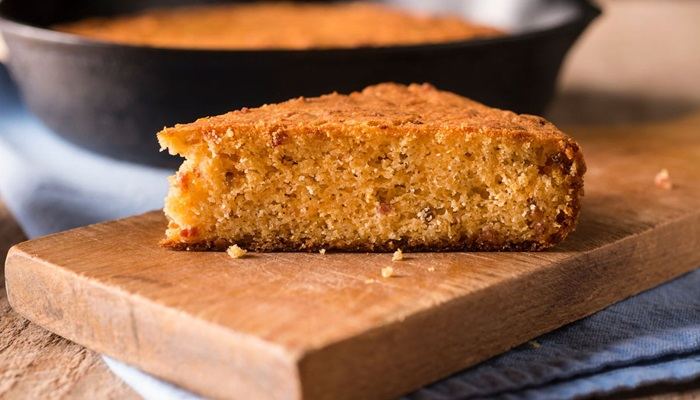Cornbread, a beloved staple in many cultures, is known for its comforting texture and versatile flavors. For individuals managing diabetes, choosing the right carbohydrates is crucial for maintaining stable blood sugar levels. This article explores whether cornbread can be a beneficial addition to a diabetic-friendly diet. We will delve into the nutritional profile of traditional and modified cornbread recipes, discuss how it fits into a balanced diet for diabetics, provide detailed recipes that cater to those with diabetes, and highlight its cultural significance.
Understanding Diabetes and Dietary Choices
What Is Diabetes?
Diabetes is a chronic condition characterized by high blood sugar levels due to the body’s inability to produce or properly use insulin. There are two main types:
Type 1: The body does not produce enough insulin.
Type 2: The body becomes resistant to insulin.
Managing diabetes involves lifestyle changes, including dietary adjustments, regular exercise, and sometimes medication.
Importance of Diet
Diet plays a pivotal role in managing diabetes. Choosing foods with a low glycemic index (GI) helps control blood sugar levels. Foods with a low GI release sugar slowly into the bloodstream, avoiding spikes in blood glucose. For diabetics, selecting grains and starches that do not cause rapid increases in blood sugar is essential.
The Nutritional Profile of Traditional Cornbread
Key Ingredients
Traditional cornbread typically includes:
Cornmeal
Flour (usually white)
Sugar
Eggs
Milk
Butter or oil
Nutritional Concerns
Traditional cornbread can be high in refined carbohydrates and added sugars, which can cause rapid spikes in blood sugar. One slice of standard cornbread contains about 150-200 calories and 20-30 grams of carbohydrates. These factors make it less suitable for diabetics without modifications.
Modified Cornbread Recipes for Diabetics
Recipe 1: Whole Grain Cornbread
Ingredients:
Stone-ground whole grain cornmeal (1 cup)
Whole wheat flour (1/2 cup)
Baking powder (1 tablespoon)
Salt (1/4 teaspoon)
Eggs (2 large)
Low-fat milk (1 cup)
Olive oil (2 tablespoons)
Honey or Stevia (optional, to taste)
Instructions:
Preheat Oven: Preheat your oven to 400°F (200°C).
Prepare Pan: Grease an 8-inch square baking pan.
Mix Dry Ingredients: In a large bowl, whisk together cornmeal, whole wheat flour, baking powder, and salt.
Combine Wet Ingredients: In another bowl, beat eggs, then stir in milk and olive oil. If using, add honey or Stevia.
Combine Mixtures: Pour wet ingredients into dry ingredients and mix until just combined.
Bake: Pour batter into prepared pan and bake for 20-25 minutes or until a toothpick inserted comes out clean.
Cool and Serve: Let cool slightly before serving.
Recipe 2: Low-Carb Cornbread Muffins
Ingredients:
Almond flour (1 cup)
Cornmeal substitute (like almond meal or coconut flour, 1/2 cup)
Psyllium husk powder (2 tablespoons)
Baking powder (1 tablespoon)
Salt (1/4 teaspoon)
Eggs (3 large)
Unsweetened almond milk (1/2 cup)
Olive oil (2 tablespoons)
Stevia or erythritol (to taste)
Instructions:
Preheat Oven: Preheat your oven to 350°F (175°C).
Prepare Muffin Tin: Line a muffin tin with paper liners or grease it.
Mix Dry Ingredients: In a large bowl, whisk together almond flour, cornmeal substitute, psyllium husk powder, baking powder, and salt.
Combine Wet Ingredients: In another bowl, beat eggs, then stir in almond milk and olive oil. Add sweetener if using.
Combine Mixtures: Pour wet ingredients into dry ingredients and mix until just combined.
Bake: Spoon batter into muffin tin and bake for 20-25 minutes or until a toothpick inserted comes out clean.
Cool and Serve: Let cool slightly before serving.
Recipe 3: Savory Cornbread with Veggies
Ingredients:
Stone-ground whole grain cornmeal (1 cup)
Whole wheat flour (1/2 cup)
Baking powder (1 tablespoon)
Salt (1/4 teaspoon)
Eggs (2 large)
Low-fat milk (1 cup)
Olive oil (2 tablespoons)
Bell peppers, diced (1/2 cup)
Onions, finely chopped (1/2 cup)
Spinach, fresh (1 cup, chopped)
Cheese, shredded (optional, 1/2 cup)
Instructions:
Preheat Oven: Preheat your oven to 400°F (200°C).
Prepare Pan: Grease an 8-inch square baking pan.
Sauté Vegetables: In a skillet, heat olive oil over medium heat. Add onions and bell peppers, sauté until soft. Add spinach and cook until wilted.
Mix Dry Ingredients: In a large bowl, whisk together cornmeal, whole wheat flour, baking powder, and salt.
Combine Wet Ingredients: In another bowl, beat eggs, then stir in milk.
Combine Mixtures: Pour wet ingredients into dry ingredients and mix until just combined. Fold in sautéed vegetables and cheese if using.
Bake: Pour batter into prepared pan and bake for 20-25 minutes or until a toothpick inserted comes out clean.
Cool and Serve: Let cool slightly before serving.
Cultural Significance and Traditions
Historical Use
Cornbread has deep roots in Native American cuisine and was later adopted by settlers in North America. It became a staple in Southern U.S. cooking, symbolizing comfort, community, and tradition. From hearty loaves served with stews to crumbly muffins enjoyed at family gatherings, cornbread has always been cherished for its versatility and flavor.
Modern Perspectives
Today, cornbread continues to be valued for its cultural heritage and culinary diversity. Many cultures incorporate cornbread into traditional dishes, emphasizing its role in promoting health and wellness. For individuals with diabetes, modified versions of cornbread represent a nutritious choice that aligns with modern dietary guidelines.
Conclusion
In conclusion, while traditional cornbread may not be ideal for diabetics due to its high content of refined carbohydrates and added sugars, modified recipes can offer a delicious and healthier alternative. By using whole grains, reducing sugars, and incorporating more vegetables, cornbread can fit into a balanced diabetic-friendly diet. Enjoying these healthier versions allows individuals with diabetes to indulge in this beloved food while supporting their overall health.
Ultimately, managing diabetes involves making informed choices about what we eat. Embracing modified cornbread as part of a balanced diet, along with other diabetic-friendly practices, can contribute positively to achieving health goals. Always consult with a healthcare provider to ensure any dietary changes align with individual health needs. Enjoy the benefits of healthier cornbread while maintaining a lifestyle that promotes well-being and vitality.
Related topics:


